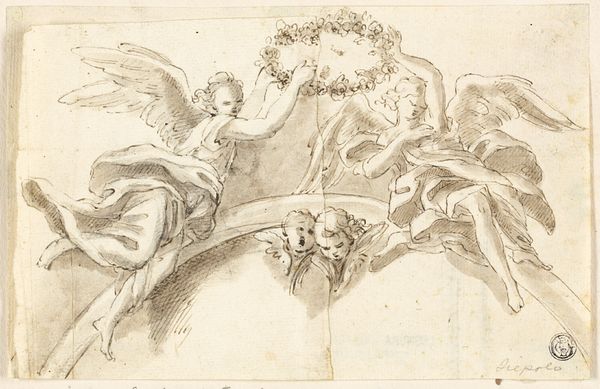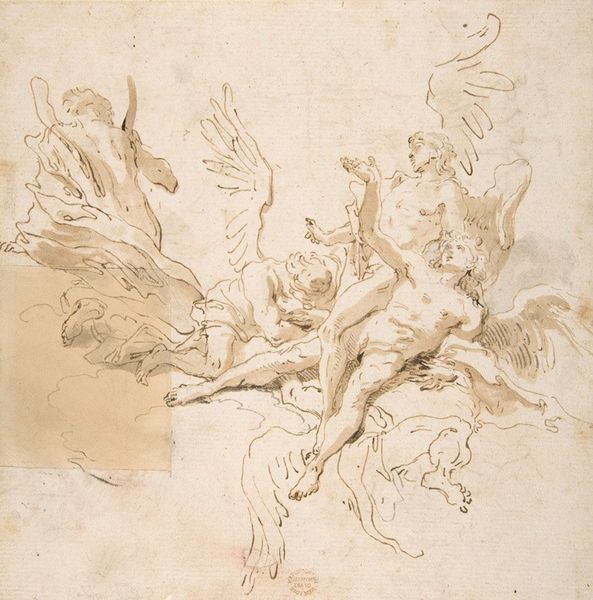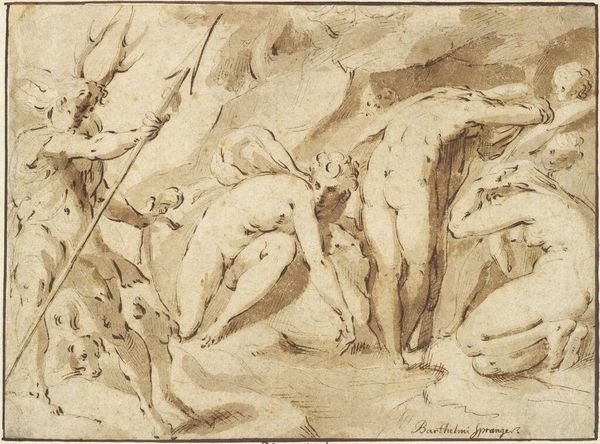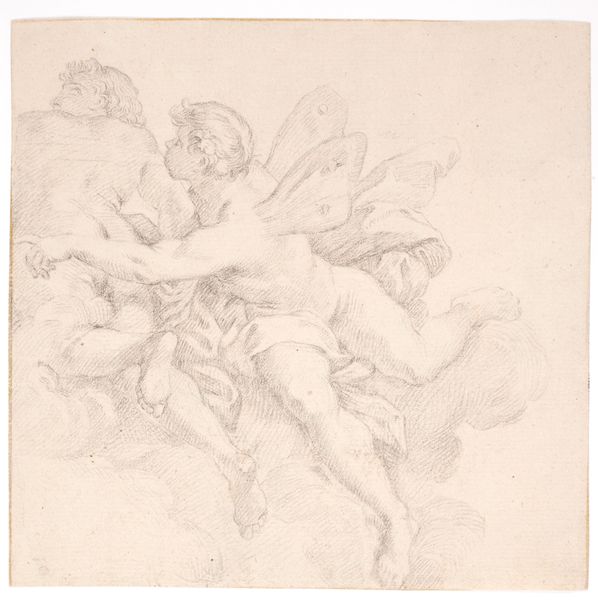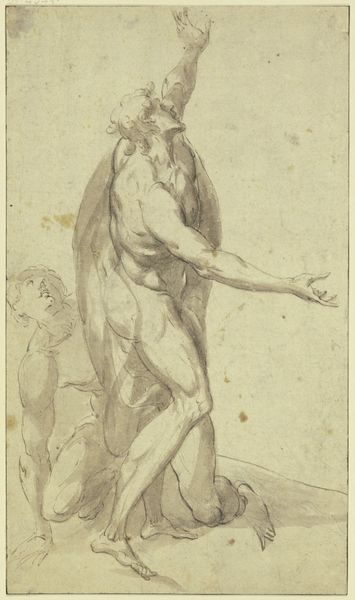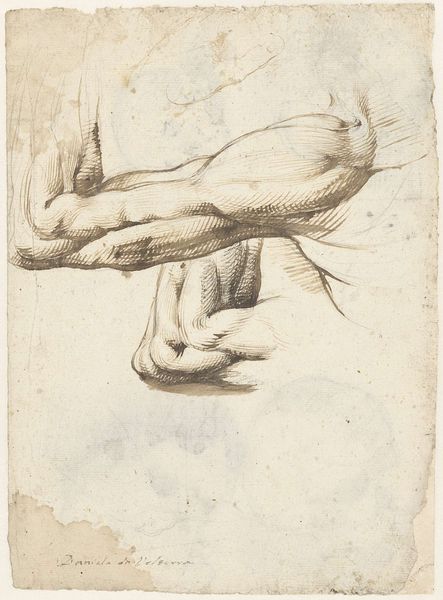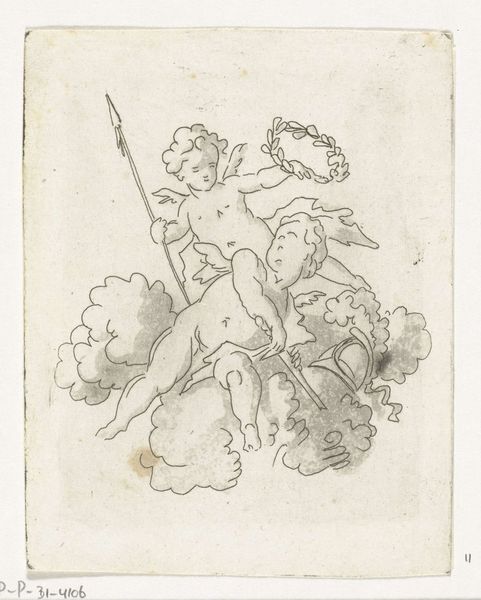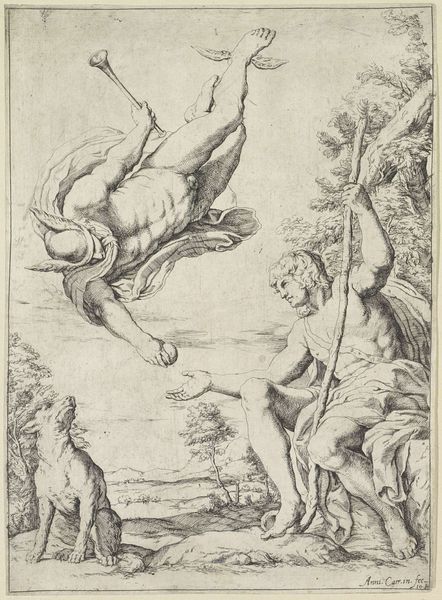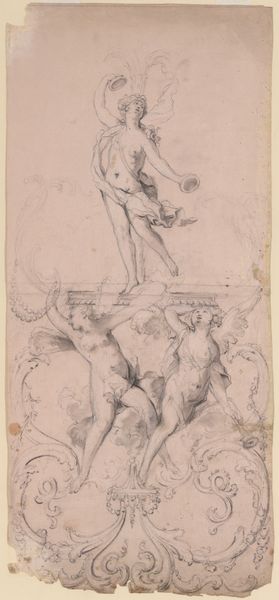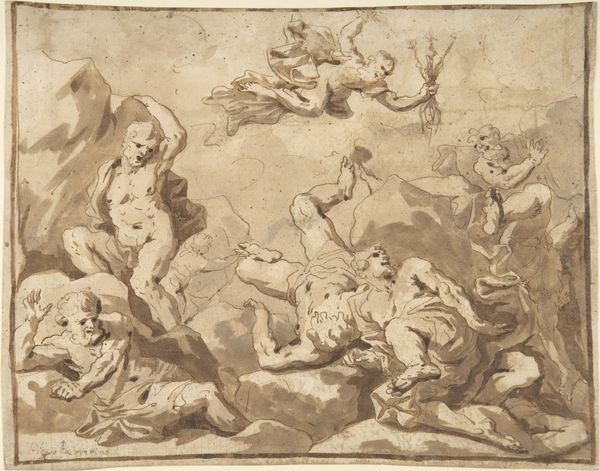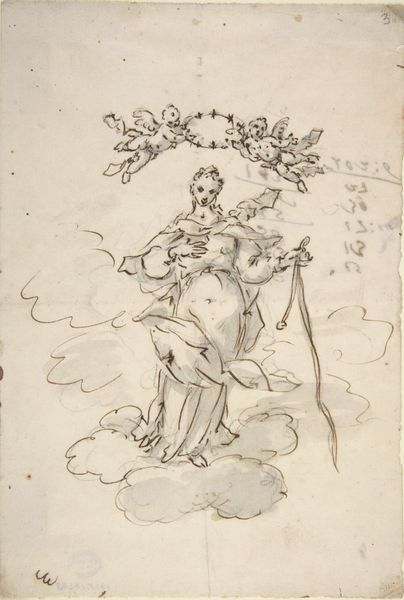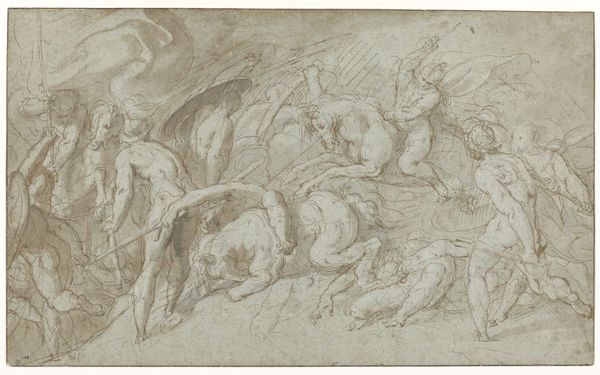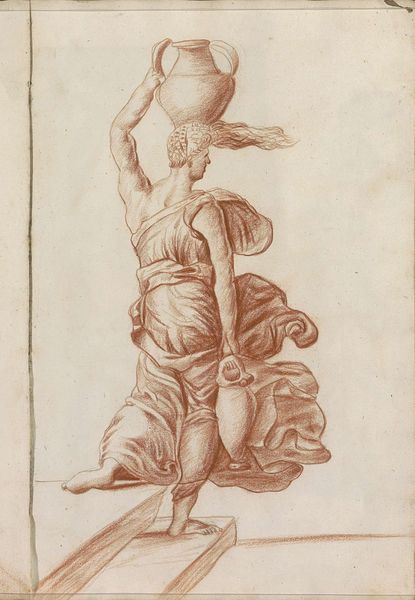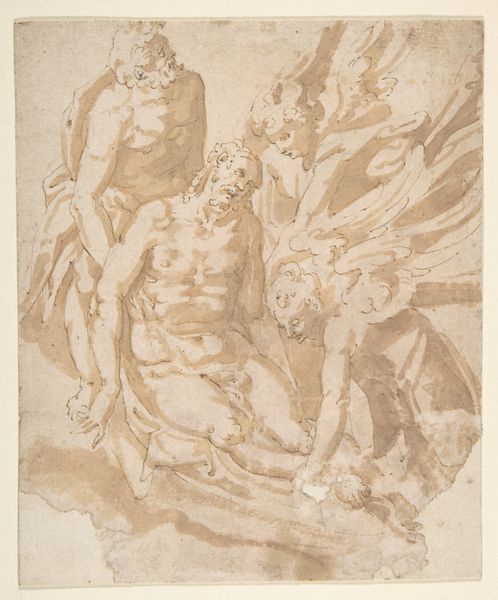
drawing, ink
#
drawing
#
allegory
#
etching
#
mannerism
#
figuration
#
ink
#
history-painting
Copyright: Public domain
Editor: This ink drawing from 1615, "Mercury and Ceres flying through the air" by Hans von Aachen, currently residing in the Louvre, presents a somewhat chaotic composition. It’s hard to immediately grasp the relationship between the figures. What aspects of its formal construction stand out to you? Curator: The tension in this drawing resides in its formal relationships. Note the swirling composition contained, as you point out, rather chaotically, within an implied circular form. This restrictive boundary, implied yet unfixed, exacerbates the dynamism of the figures contained within. Observe the artist's strategic deployment of chiaroscuro; he directs our attention to particular anatomical details and compositional vectors, thereby establishing the subject’s aerial trajectory. Editor: So the contrasts highlight their movement? I see that Mercury’s caduceus and Ceres' wheat stalks add to that upward pull, don't they? Curator: Precisely. And further, reflect on the function of line here. Observe its hesitant quality, its augmentation of implied form and texture. It gives the work an unfinished appearance, thus foregrounding the labor and artistry. Would you not agree? Editor: I see what you mean. The sketch-like quality makes me focus on the artist's process, rather than the finished image. Curator: It reveals not just the ‘what’ but the ‘how’. The means, therefore, supersede the ends, as they guide the viewer’s own aesthetic engagement. Editor: That’s a completely different perspective than I initially had. I was so caught up in trying to understand the story, that I missed seeing how the actual making contributes to its meaning. Thank you! Curator: Indeed! A valuable insight, underscoring the fundamental significance of material composition to understanding any given artwork.
Comments
No comments
Be the first to comment and join the conversation on the ultimate creative platform.
